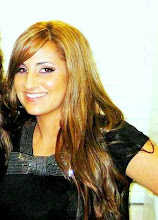Anderson, L. S., & Hildenbrand, E. K. (2009, October). Point/Counter Point: Can Facebook Replace Face-to-Face?. Retrieved October 1, 2009, from ISTE.
So for my free article of choice on ISTE, I chose one that immediately popped out in my mind because we have been talking about topics related to this one in class a lot! The article I chose was one about Facebook. We discussed social networking sights in class and even made a Twitter account. Since I also have a Facebook account I was curious to see the article! The topic of the article is can Facebook replace face-to-face? It was written from two different people, and two different perspectives.
1. Did Larry S. Anderson feel that Facebook could replace face-to-face?
Larry said yes! He feels that many adults and people tend to reject the idea of Facebook without even giving it a fair shot. He feels that is can be used to our advantage. Facebook allows judgments about people to be thrown out the window because online, a picture is not a necessity to have a Facebook account. Groups can be joined and opinions can be expressed that might not have been expressed in a face to face conversation. He feels it is a great tool for students to use!
2. Did Ellen Hildenbrand feel that Facebook could replace face-to-face?
Ellen said no! Ellen is not an advocate of online learning, and feels that a student will really only benefit from a person being present while teaching. She feels online communication can sometimes send the wrong message, and cause confusion on points trying to be made while socially interacting. She feels that as a teacher she needs to receive vibes from her students in order to effectively teach them, such as body language and facial expressions. She is not anti Facebook, just not pro it when it comes to students using it for learning.
In this post, using the ISTE website I read an article called "Can Facebook Replace Face-to-Face?" I wrote a journal entry after reading the article, and I posted it on my blog. I formulated two questions from reading the articles, and then I answered the questions.


